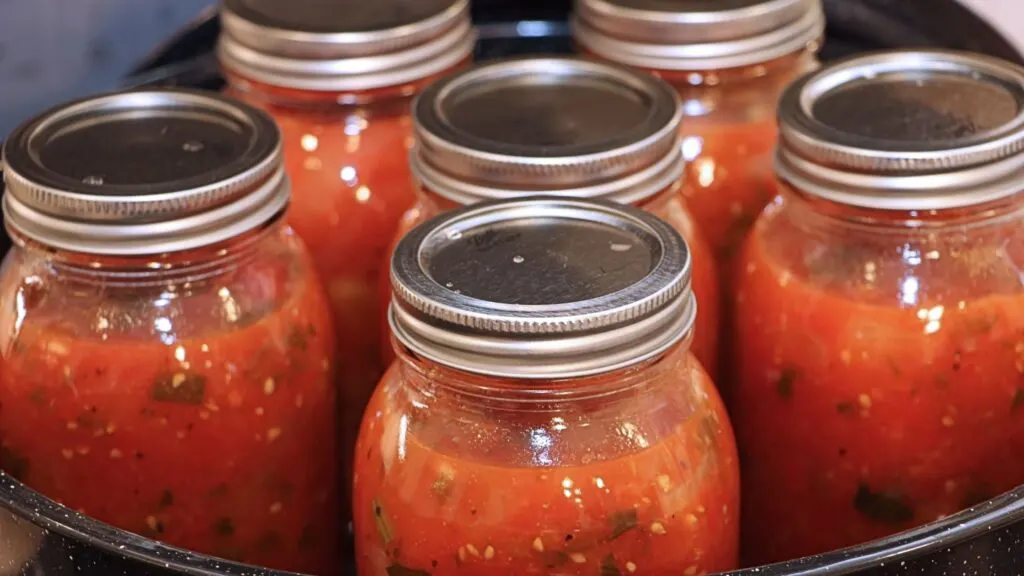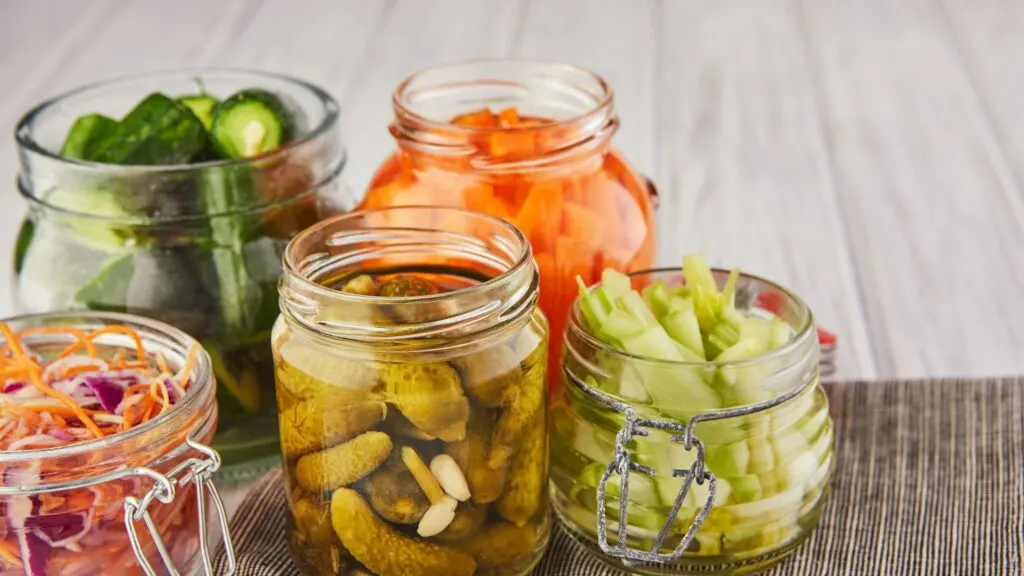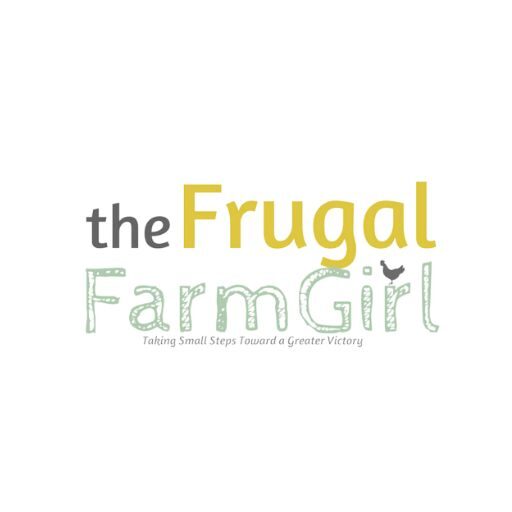Canning and preserving food is a great way to save money and enjoy your garden harvest all year. However, the process can seem daunting if you’re new to canning. But with some knowledge and the right tools, you’ll be canning like a pro in no time!
The first thing you need to do is choose the right type of food to preserve. For example, foods high in acid, like tomatoes and fruits, can be kept using the boiling water canning method. This method involves boiling the jars of food in water for a specified time.
Foods that are low in acid, like vegetables and meats, need to be preserved using pressure canning. Pressure canning involves sealing the jars of food and then boiling them in a pressure cooker.
Not every food has to be kept in a jar, though- freezing and cold storage are easy options.
Once you’ve chosen the correct type of food to preserve, you’ll need to gather some supplies. You’ll need jars, lids, rings, a funnel, a large pot or pressure cooker, and a canning rack. You can find these supplies at your local hardware store or online.
- I’ve gathered my favorite canning supplies with links to Amazon HERE.
- You can check out my full article about canning here.
Let’s get into some of the ways you can preserve your harvest.

Freeze It
Freezing food is a great way to extend the life of your summer harvest. You can cook up your frozen bounty later in the year and enjoy the taste of summer all winter long!
The only disadvantage to freezing food is that you’re limited by the room you have in your freezer.
So be sure to get in the habit of labeling frozen food well so you know what it is before you pull it out to thaw and how long it’s been sitting in the freezer. The typical shelf life for frozen foods is a year.
Use your judgment; you know when frozen foods don’t look right. However, with an efficient freezer and properly stored fruits and vegetables, you should be able to keep them for a year without any issue.
When you freeze berries, start by laying the berries out on a cookie sheet and freezing. Once completely frozen, you can place the fruit in a freezer bag.
This way, they are not stuck together in clumps. Perfect for using in desserts, smoothies, and so many other recipes.

Can It
Canning is one of the most versatile ways to preserve food. You can make and can anything from jelly and pie filling to chili and green beans. In addition, canning has the advantage of not taking up any space in your fridge and freezer.
You can store your canned goods in the pantry, on a shelf in the kitchen, or anywhere in the basement. Before you keep your canned goods, check the lids to make sure they are sealed tight.
You will know when you go to open a jar that wasn’t sealed properly, bacteria will form, and the smell and color will be off.
We didn’t have much cupboard space in our first home and would use the basement stairs as storage.
We ended up putting a pantry door rack on the basement door, too, like this.
Properly canned food also stores a lot longer than any other method.

Dehydrate It
Dehydrating fruits and vegetables is an excellent way for those who don’t have much space to store their dehydrator. You can start using your oven on the lowest setting and try making apple slices, cereal, or any other type of dish this year!
The kids love dehydrating fruits and vegetables because they are ready to eat as soon as the Ninja Foodi beeps. When you pickle things, you need to let the fruits and vegetables keep in the brine for a few days because they are ready to eat.

From there, explore more options like kale chips (which only take 30 mins.), banana chips, and dried veggies that will go perfectly in soup stock when appropriately stored inside one’s home.
We tend to dry apples from our apple trees in the Ninja Foodi. It’s quick and easy. I shared the recipe on the blog here.
You can put the dried fruit in mason jars or a plastic bag.

Pickle It
There are many ways to preserve food; pickling is the most common. Pickles, for example, involve submerging produce in a brine made up mostly of salt with sugar mixed into it and alongside various spices such as garlic or dill weed which give them their unique flavor profile while also preserving.
You can do so many things with a brine- I make a delicious zucchini relish and replace our regular seasoning when making tarter sauce and other condiments.
Dilly beans- pickled green beans are a good one too. Pickling eggs is popular this year, especially on Tiktok, but I just haven’t had the desire to try that one yet.
You can experiment by trying other types like pepper relishes that may be more appealing during warmer months but maybe less so come wintertime–or hot sauce, anyone?
Want to get started gardening? Try container gardening.
Dry herbs and spices
Drying is one of the oldest methods of preservation around.
To dry your herbs, expose the leaves or flowers to warm air upside down. It’s best not to leave them in direct sunlight because they can also lose flavor and color!
Once they are completely dry, you can put them in a mason jar or any reusable container airtight. I usually leave my leaves whole and then crush them right before using them in a recipe.

Cold Store It
Root vegetables, apples, and cabbages all have a natural tendency to store well in cool, dark places. For this reason, many homes had root cellars where they would keep their produce until needed–today, your pantry might be just as good of location!
Do you have a basement that you can use? If so, set up some shelves for all your canning goodies.
Onions are a great way to preserve with cold storage so your harvest will last longer. If possible, avoid placing them near foods that might spoil quickly because this could make your onion go bad even faster!
The best storage containers are ones with mesh bags or nylon stockings; it’s crucial for air circulation, so don’t forget these when cold storage. Storage temperatures should be 32 to 40 degrees F.
Have we convinced you that preserving and storing fruits and veggies e is the way to go? If so, be sure to check out our favorite book on canning. It’s packed with recipes and tips for beginners and experienced preservers alike.
And if you try any of these methods, let us know how it goes! We’d love to hear about your success (or failures) in keeping your food fresh all year round.
